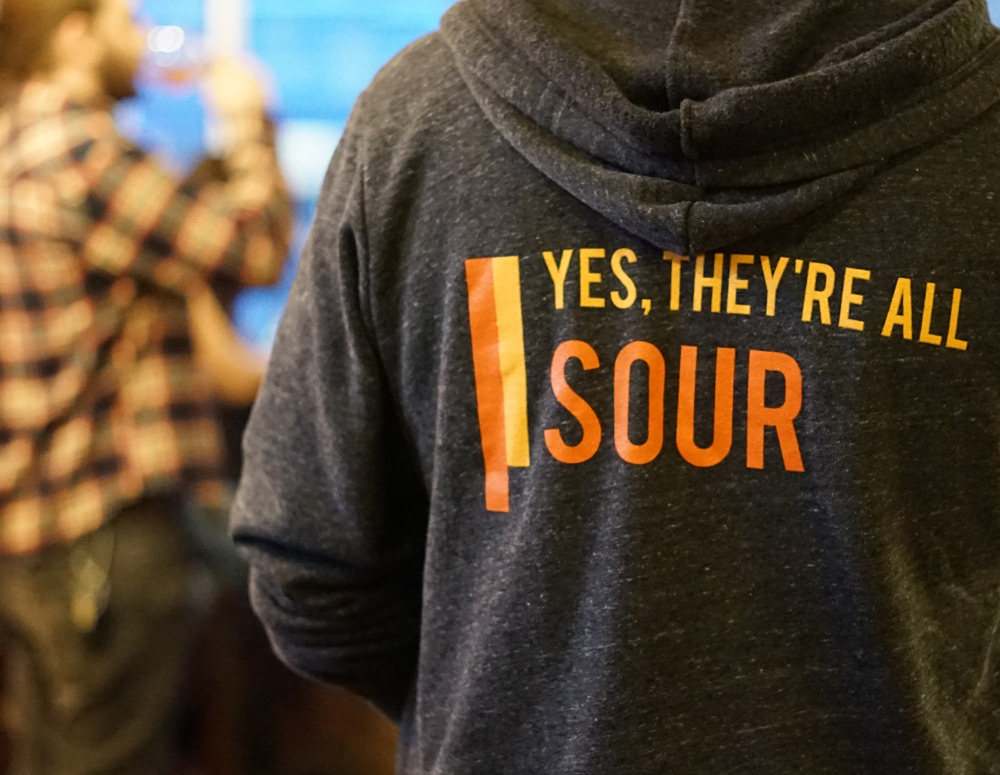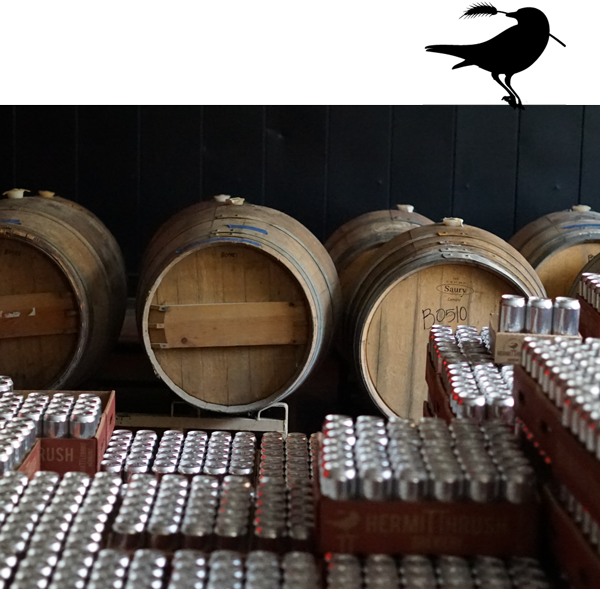hen a sour beer is fermenting, something sweet happens: The brew pulls in wild yeast from the air, taking on the terroir of the region where it was made.
“It’s kind of magical,” says Christophe Gagne ’08, who developed a taste for sours shortly after Swarthmore and “fell in love with the microbiology of beer.”
These days, Gagne taps into that magic daily as president of Hermit Thrush Brewery, the craft beer company he co-founded in 2014 with college friend Avery Schwenk ’07.
Since setting up shop six years ago in Brattleboro, Vt., Hermit Thrush has extended its reach to eight East Coast states and Washington, D.C., while expanding its operations from a small brewery and tasting room to a 20,000-square-foot warehouse on the edge of town. More than 100 beer varieties — all sours — have been produced, each incorporating local yeast, hops, and fruit. And through it all, the beermaker has used biomass instead of fossil fuels, with an eventual goal for a zero-emissions brewhouse.

hen a sour beer is fermenting, something sweet happens: The brew pulls in wild yeast from the air, taking on the terroir of the region where it was made.
“It’s kind of magical,” says Christophe Gagne ’08, who developed a taste for sours shortly after Swarthmore and “fell in love with the microbiology of beer.”
These days, Gagne taps into that magic daily as president of Hermit Thrush Brewery, the craft beer company he co-founded in 2014 with college friend Avery Schwenk ’07.
Since setting up shop six years ago in Brattleboro, Vt., Hermit Thrush has extended its reach to eight East Coast states and Washington, D.C., while expanding its operations from a small brewery and tasting room to a 20,000-square-foot warehouse on the edge of town. More than 100 beer varieties — all sours — have been produced, each incorporating local yeast, hops, and fruit. And through it all, the beermaker has used biomass instead of fossil fuels, with an eventual goal for a zero-emissions brewhouse.
Though Hermit Thrush is serious about sustainability, its team isn’t lacking in quirky creativity. Gagne knows that when a great idea is brewing, he has a tendency to take things over the top, which is why Schwenk has a second, unofficial title on his business card: Director of Whimsy Control.
“I am often the originator of cockamamie schemes and curious, interesting things, and Avery is very explicitly there to rein me in,” Gagne says with a laugh.
It’s a dynamic that has served these business partners well since college. Take, for example, their eclectic line of beers, with names like Supah Phunk and Party Jam and 40 Mile Fun Zone. Or their late-night radio show from their Swarthmore days, Intelligent Music; Tasty Fish, which combined songs with snacking — and solidified their friendship.
“Chris is very good about sharing ideas, and I’m very good about sharing my opinion about those ideas, and vice versa,” adds Schwenk, who also serves as president of the Vermont Brewers Association. “It would be hard to imagine working with anybody else on this project.”

“I naturally thought, ‘Let me try to make some sours at home. It can’t be that hard,’” says Gagne, who was a psychology major at Swarthmore. “And then I found out just how hard it was.”
Traditionally aged in wooden barrels used to ferment wine or spirits, sour beers make use of wild yeast or bacteria, instead of just the standard brewer’s varieties. The process, which can take 18 months or longer, results in a complex, almost wine-like brew, with a flavor unique to its brewing locale. It also lends itself to more energy-efficient brewing, as barrel sours require minimal refrigeration while they ferment.

After a six-pack of his sours received glowing reviews from connoisseurs in Philly’s beer scene, Gagne set out to start a brewery of his own. Schwenk agreed to join him, eager for a change of pace from city life and his job as a paramedic. The pair settled on Vermont, citing the water quality, environmental protections, and — most important — the yeast present in the state. Their company’s name is a nod to Vermont’s state bird, the hermit thrush.
“The wild yeast here in Brattleboro is absolutely phenomenal,” says Gagne. “One of the worst things to happen in sour beer is for it to taste like vinegar, but there just aren’t many vinegar producers in the wild microflora here.
“Plus, people do things kind of differently in Vermont,” he adds. “There’s a lot of bootstrapping, and it culturally makes sense with who we are and what we imagined Hermit Thrush to be.”
For both Gagne and Schwenk, that has included an ethos of environmental stewardship instilled in them at Swarthmore. As a member of Vermont’s Green Brewery Cohort, Hermit Thrush has committed to cutting energy use by 5% this year while identifying ways to further reduce its waste generation and overall carbon footprint.
“I feel like we can run the business in a very socially engaged way,” says Gagne. “It’s just good to be a positive force.”
“Even though it isn’t the study and the field that I expected to have a career in,” adds Schwenk, “for me college was really about the skills of analysis and communication and collaboration, problem-solving — being able to sit down and read a dense paper and see how it applies to me and our business. Nearly everything that I’m doing is directly connected to the time I spent at Swarthmore.”

Aged for 18 months in various wine barrels, Supah Phunk is Hermit Thrush’s American take on the Belgian lambic or geuze. Gagne developed the sour golden ale during his homebrewing days and often uses it as a base when creating new beers.
“We do two different releases of it a year,” he says, “and part of the beauty of it is each vintage is not necessarily the same.”
Supah Phunk 6, for instance, was really herbal and grassy, whereas Supah Phunk 8 was bright and floral, Gagne notes.
Meanwhile, Supah Phunk 10, the latest iteration, “is balanced and crushable and almost a little cheesy,” he says. “There are definitely some common themes, but it’s pretty fun to use such a diverse palate of 180 microflora.” — E.S.